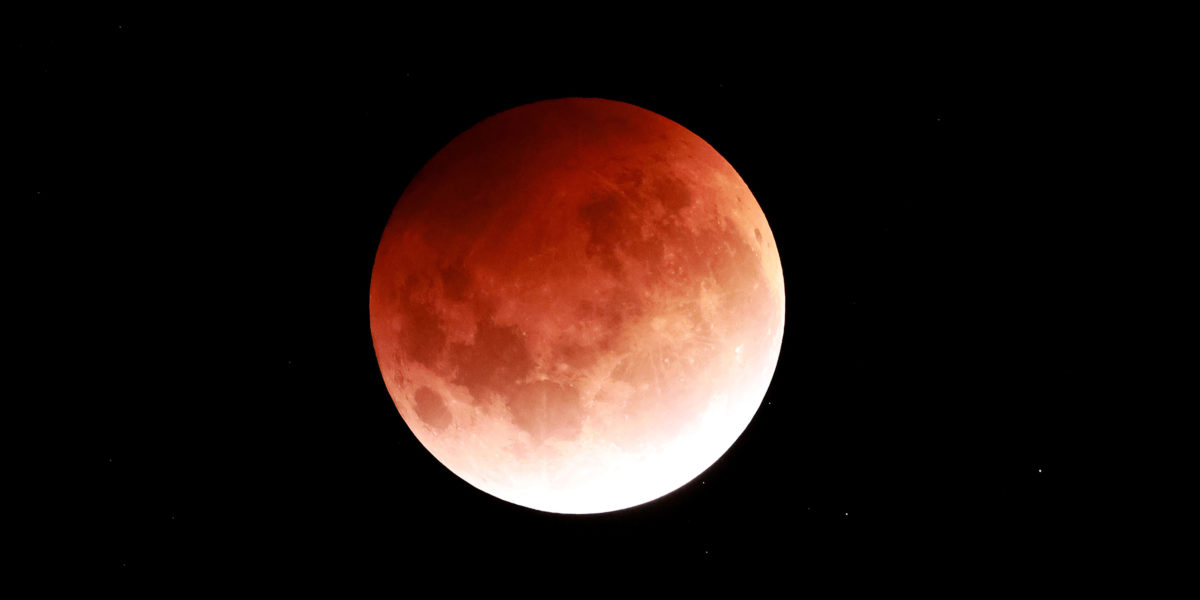
You Won’t Be Able to See Another Total Lunar Eclipse Until 2025, So Don’t Miss Your Chance This Week
Use our guide for the best view.

Phil Walter/Getty Images
You’re not going to be able to see a total lunar eclipse for 3 years, so consider Tuesday, Nov. 8 your last chance to view one for a while. The next eclipse will occur on March 14, 2025.
According to NASA, “a lunar eclipse occurs when the Sun, Earth, and Moon align so that the Moon passed into Earth’s shadow, called the umbra.” Since the moon turns red when it’s within umbra, total lunar eclipses are often called a “blood moon.” What a daunting moniker! And, this particular one is nicknamed the “Beaver Blood Moon Eclipse,” since any full moon during the month of November is called a Beaver Moon, according to Today.
When Can I See the Total Lunar Eclipse?
You’ll have to stay up late or wake up extra early to see this “blood moon”—the eclipse starts at 12:02 a.m. PT and will enter totality at 2:17 a.m. Totality ends at 3:42 a.m. and the whole eclipse ends at 5:50 a.m.
What Can I See?
NASA has mapped out descriptions of what you might be able to see at certain times during the eclipse, here are some times to be aware of and what to expect:
12:02 a.m.: Penumbral eclipse begins; “The Moon begins to dim, but the effect is quite subtle.”
1:09 a.m.: Partial eclipse begins; “To the naked eye, as the Moon moves into the umbra, it looks like a bite is being taken out of the lunar disk. The part of the Moon inside the umbra will appear very dark.”
2:17 a.m.: Totality begins; “The Moon will turn a coppery-red. Try binoculars or a telescope for a better view. If you want to take a photo, use a camera on a tripod with exposures of at least several seconds.”
3:42 a.m.: Totality ends; “As the Moon exits Earth’s umbra, the red color fades. It will look as if a bite is being taken out of the opposite side of the lunar disk as before.”
Where Can I See the Total Lunar Eclipse?
Totality will be visible across North America. And lucky people in Alaska and Hawaii will be able to see every stage of the eclipse. Of course, the best place to view an eclipse is an area that’s away from bright lights.
And if you’re not in an optimal viewing spot, NASA is doing a livestream featuring an interview with a lunar scientist and commentary from live stream contributors around the world.
Read the Current Issue Here!
Get one year of Sunset—and all kinds of bonuses—for just $29.95. Subscribe now!
